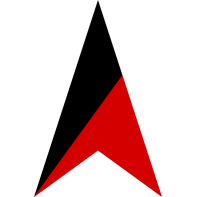-
As an opening note, I’d like to mention that while I came to the conclusions discussed in this post while researching what a “socialist mode of production” would look like, I’m attempting to the best of my abilities to not argue for one system or another. Rather, my goal is to share my findings on how economics can be broken down.
It was December 2018. I had recently read through a forum discussion about Universal Basic Income, an idea I supported at the time. One of the comments mentioned how socialists view UBI as a band-aid fix.
“Wait,” I thought. “Isn’t UBI a form of socialism?” I realized that even though my past 18 year old self had donned the label anarcho-communist, I didn’t actually know what that meant, other than “things should, like, be more equal.” I had left anarcho-communism behind in my 20s when I came to the realization that capitalism does work and became a supporter of it. But for some reason, when this last December rolled by, I connected with my old self again. You see, I have a problem. An addiction. I need to know how things work. It’s why I know a several forms of assembly language. It’s why I have a drawer full of deconstructed electronic components. I can remember my dad tell me as a kid: “Don’t take this apart!”. And now I needed to know what socialism meant; to deconstruct it and understand it. In our culture, the things we most attribute to socialism (state capitalism and welfare capitalism) have nothing to do with socialism. So what is it?
Then it started. A strange manic episode which seemed to come from nowhere. For weeks, I was waking up after only four or five hours of sleep. I would open my eyes, the sky would still be dark, and I was exhausted, but my head was racing. I used my early mornings to my advantage: reading papers, researching economic theory, architecting systems, thinking through methods and incentives. I swam through ideas like I had woken up at the bottom of a lake and needed air: libertarian socialism, central planning, free association, market socialism, common ownership, democratic socialism, communism, syndicalism, social dividends, collectivist anarchism. Marx, Kropotkin, Cockshott. USSR, China, Cuba, South America, the Spanish Civil War. A raging torrent of information, history, and theory. I found a subreddit where people argue bitterly about economics. I talked with people and I fought with people, socialists and capitalists alike. I formed opinions. I talked more. I fought more. I asked questions. I reshaped all my opinions. Then I did it all again.
The whole time, I was working on a project that would be the ultimate conclusion of my findings (which I will publish at a later date). This work has ushered me into a deeper understanding of how things are organized and how the pieces of economics all fit together.
The five components of economic systems
I ultimately found that there are five main components that describe an economic system. Because these are not apparently obvious, I thought it would be helpful to document my observations:
- Ownership. This is the crux of the capitalism vs socialism debate. Capitalism necessitates private ownership of the means of production. Socialism is the social ownership thereof. This means capitalism simpler: anything can be privately owned. Socialism is a bit more complicated, because it makes a distinction between private property (factories and stuff) and personal property (your hat, your Roomba, your toothbrush). This distinction is lost on many people (aka the “you want to take my toothbrush” problem).
- Organization. Is the economy completely decentralized and self-organizing? Or is there one entity that plans every input and output down to meticulous detail? It’s important to note that the former is attributed to capitalism, and the latter to socialism. This is mainly because most Marxist-Leninist states employed central planning for their economic system. But central planning is not socialism…social ownership of productive property is. It’s possible to have privately-owned production with heavy central planning (for instance, Nazi Germany). It’s possible, in theory, to have socially-owned productive instruments with a small (or no) government. We also have central planning in the United States (NASA, farm subsidies, etc).
- Costs/valuation. Valuation can be done with prices guided by market forces, which is the mode we’re all used to because it’s how capitalism does things. However, there are more methods of valuation. There’s the Marxian value theory in which a thing is valued at the average amount of labor it took to build it. There is in-kind valuation, where all possible aspects of costs are tracked for a particular item (for instance, the labor that went into it, how much of each raw material, externalities if possible, etc). It’s important to note that cost and value are different: there is some intersection between the two, but value might ignore a cost like pollution, and cost might not take into account how something is valued to a particular individual.
- Exchange. What medium do productive entities use to exchange? Money is the most prevalent one. There are other ideas, though, such as the free association of producers, where exchange happens freely…producers order things from other producers in order to meet some social need. If using central planning, exchange would look like an internal transfer might look at a large corporation.
- Distribution. Who gets what? If using a money system, those with money buy what they want. If using gift economics, distribution might be a function of reputation. If labor vouchers, distribution is a function of hours worked (and possibly the social value of that labor). In some systems, distribution is need-based (“to each according to their needs”…I realize this is loosely defined). Distribution could be ration based as well: each person gets a daily allowance of resources they can consume. It’s important to note that the distribution mechanism is also what puts downward pressure on resource consumption and incentivizes higher levels of efficiency in the productive process: producers must make things in such a way that those who want those things can afford them.
In theory, some of these parts can be swapped out for another. Also, few of these categories are binary: you can have some mix of public/private ownership, or some mix of decentralized/central planning. However, note that money can be used in a number of these economic components. This is a beautiful selling point of moneyed capitalism, but also what makes it hard to pick the above concepts apart: it’s simple. Anyone can own anything, and valuation/exchange/distribution are all based on money.
Also, notice we’re missing the authoritarian aspect here completely. This is on purpose. Economics and authoritarianism are completely separate topics, as much as people like to lump them in together. It’s possible to have a totalitarian government with privately-owned production. It’s possible to have a tiny government with social ownership of production.
Let’s clarify some ideas.
Ownership
I’d like to talk about the concept of ownership. I think it’s important to mention because it’s a deep topic of debate between proponents of socialism. What does it mean to have “common ownership over the means of production?” What even are the “means of production?”
For the productive instruments to be socially owned, there are a number of different ideas. First, the most common understanding is state ownership. This is tricky, though. If the state is representative of the people in it, then by the state owning the means of production, the people do as well. However, if a state is authoritarian such that the citizens have very little control, then the productive instruments are not held in common, but rather owned by oligarchs. This is in contrast with more anarchist ideas, in which ownership of means of production is directly social, as in, not proxied through a state (or perhaps, in the libertarian case, owned by a municipality) and use thereof is determined cooperatively.
Then, there’s the “means of production” themselves. There are as many definitions of this as there are socialists, but one common theme I’ve seen over and over would be large capital assets: raw materials/resources, productive land (farms), factories, warehouses, office buildings, air/sea ports, large machinery, and intellectual property. Essentially, anything that’s used exclusively for productive purposes would be a target for social ownership. It would be possible to socialize laptops and toothbrushes and things of that nature, but it likely would not be very effective at all.
Lastly, let’s talk companies themselves. Socialism necessitates abolishing private ownership of companies. What does this mean, though? Does the state own all companies? Do the employees? The answer is it depends. In some models (such as central planning), yes, the state would own, or at least orchestrate, all companies. In other systems, companies would be self-determined and would be state-agnostic. It’s important to note that just because the means of production are socialized doesn’t mean that the companies using those means of production need to be socialized as well.
Organization
Another important topic is how the economy is organized. It’s often thought that decentralized organization cannot work without prices/profits. I’d like to demonstrate that as theoretically false.
If you have a transparent system that allows orders between productive entities (for instance, some kind of blockchain), demand can be measured directly by looking at the order list. Instead of, then, using price signals to determine supply levels, supply can be matched directly to demand.
In other words, money is a method of exchange between productive entities, but it’s not the only method of exchange. Organization is as much about communication of needs as it is about a means of exchange: if needs can be communicated directly, then distributed production can be enabled, no matter what valuation system (or system of exchange) is used.
That wraps things up. I hope reading this was as illuminating to you as it was for me to discover it.
Kill the radio (or die trying)
Hi, I'm Kay Lyon.
I'm working on Stamp, a p2p identity system used as the
foundations of other systems, like the upcoming version of Turtl
(a p2p encrypted, collaborative knowledge base) and Basis (the world's
favorite post-capitalist economic protocol).
Recent posts
- Stamp protocol: a p2p identity system
- The property "ownership" myth (and other thoughts on socialization)
- The Five Components of Economic Systems: A discovery through explorations of Socialism
- The mystification of pricing
- Wealth is (mostly) a zero-sum game
- How to really save Net Neutrality
- Debug comments (or how to save your sanity using git)
- Ansible: included handlers not running in v2.x
- Spam entry: We are expert


